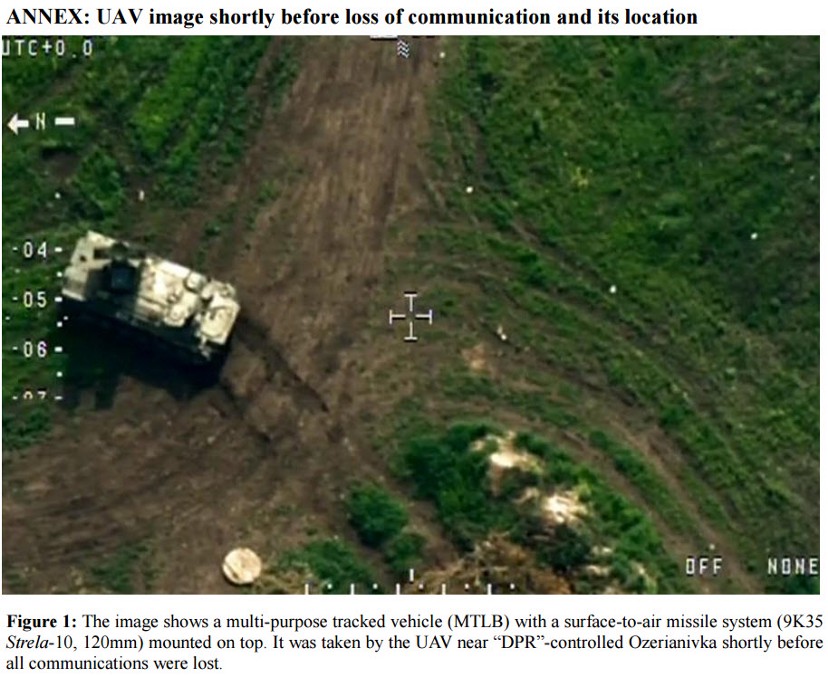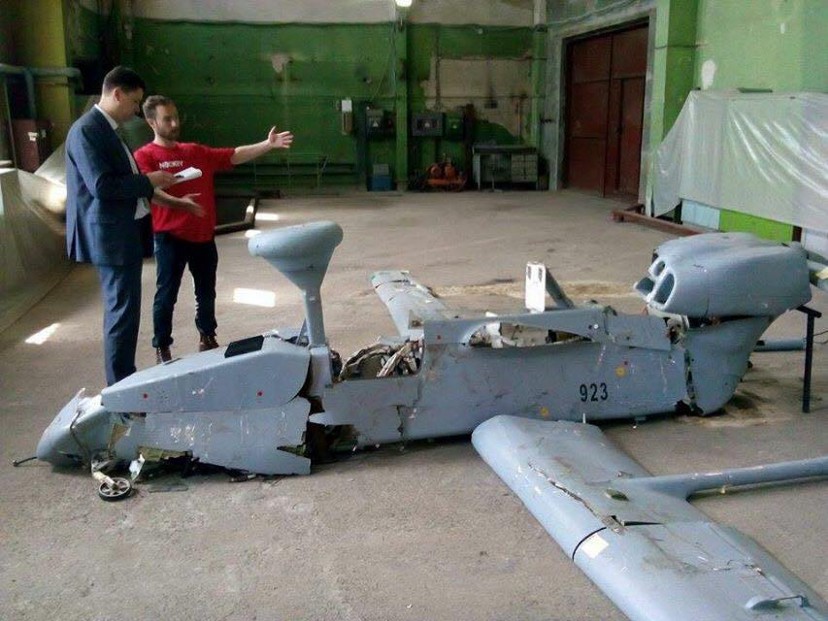Blinding the Eye in the Sky
How combatants target the Minsk II Monitoring Mission
Blinding the Eye in the Sky
Share this story
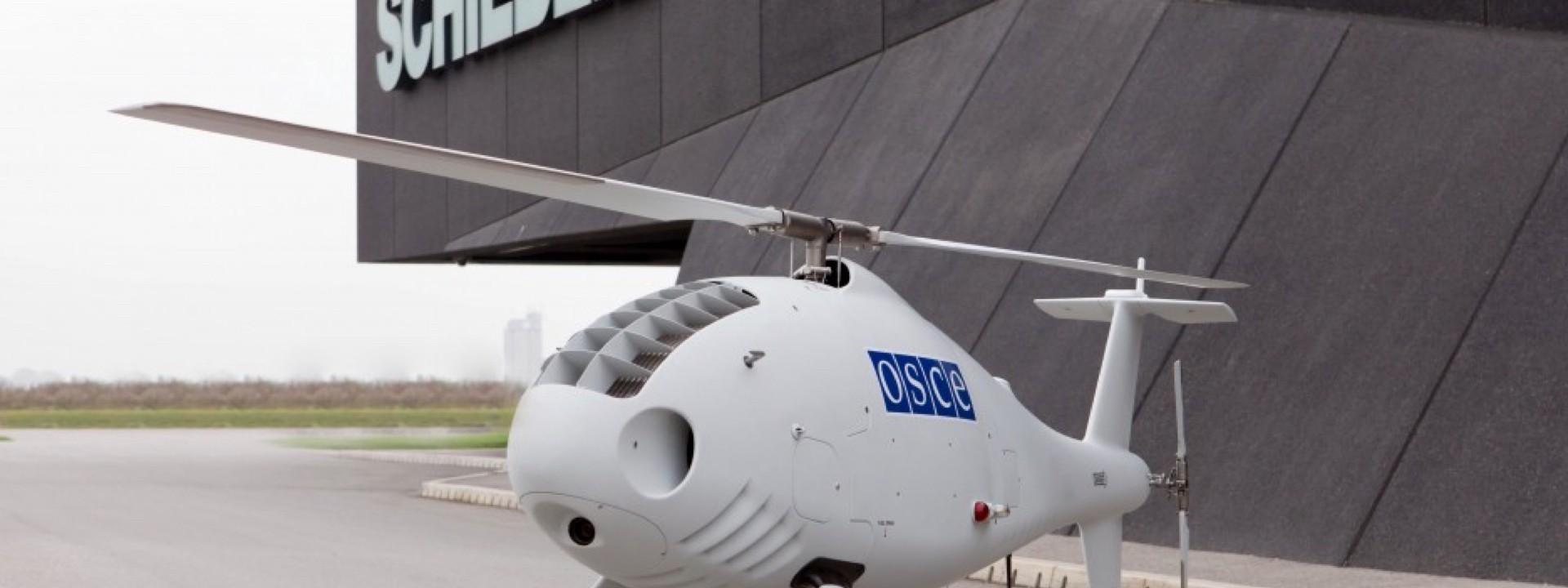
How combatants target the Minsk II Monitoring Mission
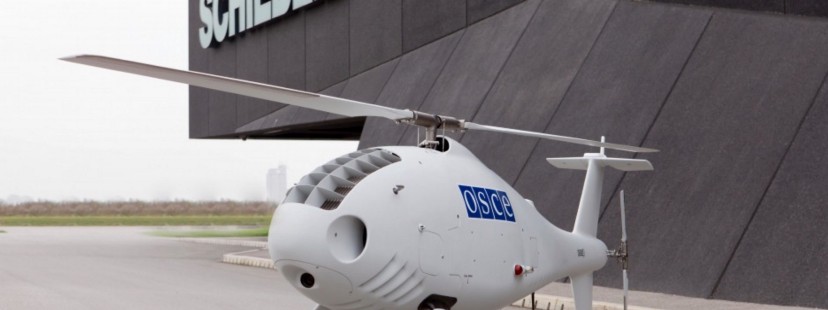
The Organization for Security and Co-operation in Europe’s (OSCE) Special Monitoring Mission (SMM) to Ukraine uses a variety of methods to observe ceasefire violations, including the use of unmanned aerial vehicles (UAVs). Since their introduction into the field in November 2014, these UAVs have become targets for both pro-Russian separatists and the Ukrainian Armed Forces and have been downed by both small arms and by “sophisticated Russian jamming equipment.” The effectiveness of their use in monitoring the conflict can be seen in multiple videos released by the OSCE SMM of exchanges of fire between Ukrainian and separatist forces north of Donetsk.
OSCE SMM UAV Video #1: Uploaded June 2, 2016
May 29, 2016
On June 2, 2016, the OSCE SMM to Ukraine shared a video on YouTube of two 2S3 Akatsiya 152mm self-propelled howitzers firing four rounds on government-controlled Avdiivka. The video was recorded on May 29, and a description of the recorded events was published in a daily report from the OSCE SMM:
On the night of 29 May, an SMM long-range unmanned aerial vehicle (UAV) spotted in “DPR”-controlled Mineralne (10km north-east of Donetsk) two self-propelled howitzers (2S3 Akatsiya, 152mm) firing four rounds in a north-western direction — in the general area of government-controlled Avdiivka (17km north of Donetsk) — after two explosions had just occurred within 200 metres of their position.
The video shows this event, with the two explosions near the howitzer positions likely a result of Ukrainian artillery fire. Minutes after the incoming fire, the two howitzers in separatist-controlled territory fire towards Avdiivka.
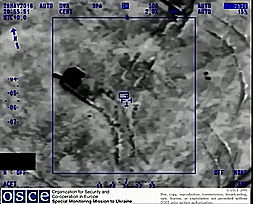
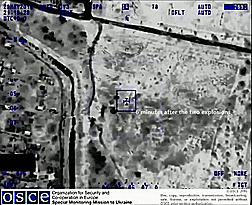
Our Online Open Source Investigation (OOSI) into the locations of these howitzers confirms the information published by the OSCE Special Monitoring Mission to Ukraine.
The landscape captured by the UAV matches that of Mineralne on Google Earth. In the graphic below, touch or click the slider in the middle of the image to see the same location in OSCE SMM UAV footage and on a Google Earth satellite image.
The UAV was able to capture the target of the shelling: government-controlled Avdiivka, to the northwest of the filmed firing positions. The last frame of the published recording shows the city. As with the howitzer positions in Mineralne, imagery from Google Earth shows that the OSCE correctly assessed the scene as Avdiivka.
Twenty minutes after the howitzers fired towards Avdiivka, locals in an Avdiivka Vkontake group posted that shelling was taking place in the city, including one woman who said that “It has begun again, with night always comes the firing!”
OSCE SMM UAV Video #2: Uploaded July 31, 2016
Another video uploaded on July 31, 2016 contains UAV footage from the nights of July 18, 21, and 22. The surveillance UAV captured footage of artillery strikes landing on both factions’ territories, anti-aircraft flak directed at a rocket fired from the Ukrainian side, movement of unauthorized vehicles in government-held territory, and mortar launches from separatist-held territory. These incidents were corroborated by observations on the ground both during and the day after the violations in OSCE SMM daily spot reports.
July 18, 2016
On July 18th, the OSCE SMM UAV captured video of artillery fire striking a separatist-held fortification around the Yasinovatsky traffic outpost and railway station No. 2 on the M04/E50 road and shells striking a building on the northern edge of the nearby Ukrainian-held industrial zone, suggesting that both factions were launching targeted artillery strikes that night. These strikes were included in the July 19th OSCE SMM spot report.
On the evening of 18 July, the SMM long-range unmanned aerial vehicle (UAV) recorded an exchange of at least 47 82mm mortar rounds between the industrial zone government-controlled Avdiivka and “DPR”-controlled Spartak. The UAV first recorded three explosions assessed as impacts of 82mm mortar rounds along E50 road at Yasynuvata railway station no. 2, 11 explosions assessed as impacts of 82mm mortar rounds in and around the industrial zone in the south-eastern corner of Avdiivka, two more explosions assessed as impacts of 82mm mortar rounds again along E50 road, and five explosions assessed as outgoing 82mm mortar rounds from Spartak area. The UAV then recorded two more explosions assessed as 82mm mortar round impacts south-west of Yasynuvata railway station no. 2. Approximately 30 minutes later, the UAV recorded four explosions assessed as impacts of 82mm mortar rounds near and on a large, fenced-in industrial building on the northern edge of the industrial zone. Finally, the UAV recorded 20 more explosions assessed as 82mm mortar impacts in the industrial zone, leading up to the E50 road.
With each of these incidents, the footage from the OSCE SMM UAV and satellite images from Google Earth can be juxtaposed, showing the locations north of Donetsk. In two incidents from July 21, we see incoming artillery fire in both Ukrainian and separatist-controlled territory near Avdiivka.
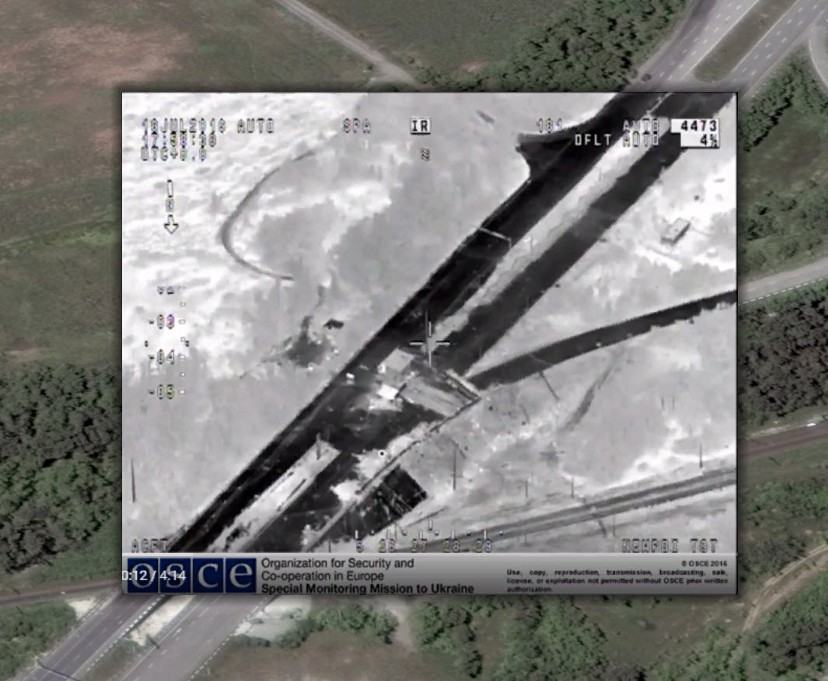
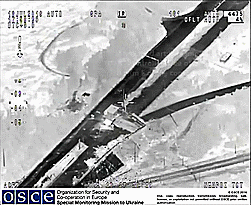
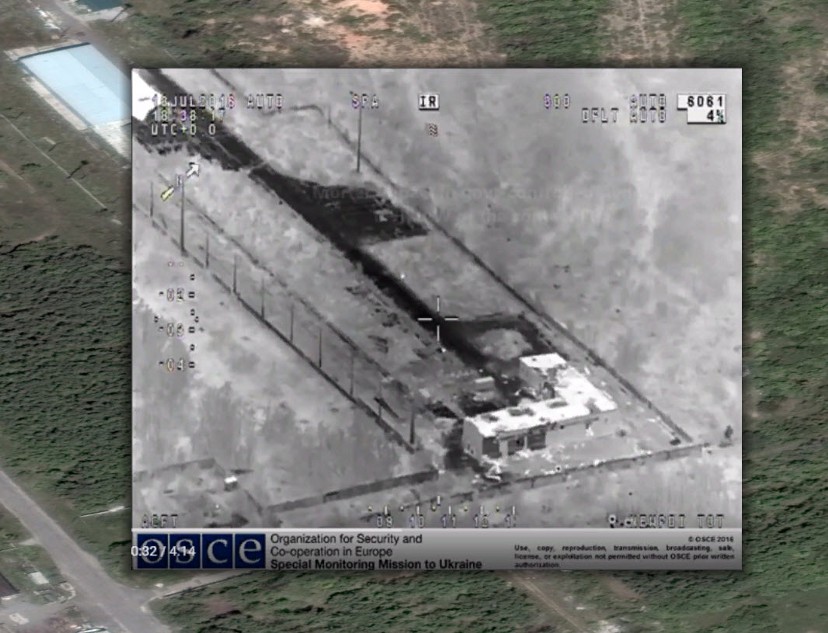
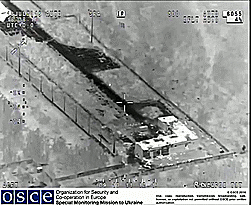
July 21, 2016
While most of the video footage shows only one side of the fighting, one sequence shows a missile launch from Ukrainian-controlled territory northwest of the “promzone,” and bursts of anti-aircraft fire near separatist-controlled territory.
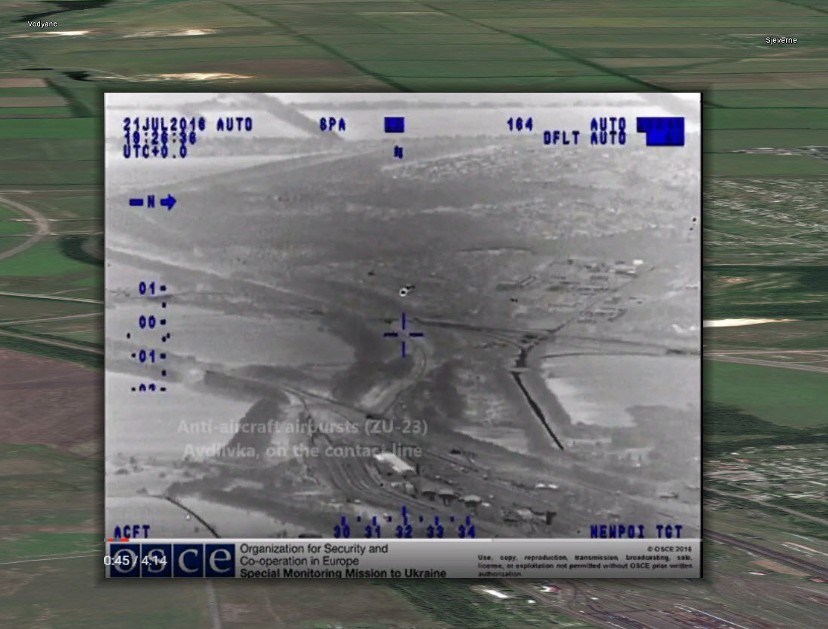
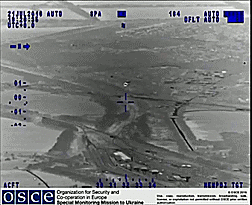
July 22, 2016
The OSCE SMM UAV did not only capture bursts of fire, but also the movement of military equipment through civilian areas — a clear violation of the Minsk protocols.
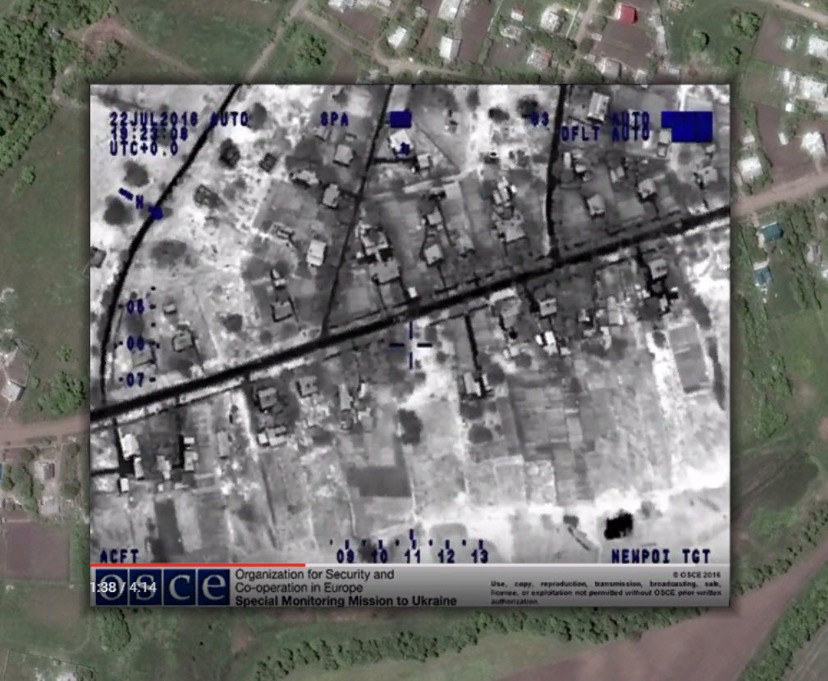
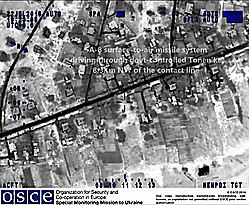
Popular targets
The capability of the OSCE SMM UAVs to capture such flagrant violations of the Minsk accords is likely the reason why they have been so frequently targeted by both factions of the war. Military experts have noted that separatists have targeted OSCE SMM UAVs with “small arms, anti-air rockets and electronic warfare” after observing separatist military equipment.
Both the Ukrainian army and separatist forces, though far more often the latter, have targeted the OSCE SMM’s UAVs with attacks. The reason behind the targeting of these UAVs is not a mystery — with them, the OSCE SMM is able to film and publish flagrant violations of the Minsk accords from both sides.
On the morning of May 27, 2016, pro-Russian separatists downed a monitoring UAV on the outskirts of separatist-held Horlivka. The reason for this downing is obvious from the military equipment it observed before being targeted: a Russian-provided 9K35 Strela-10 surface-to-air missile system (NATO designation SA-13 “Gopher”).
In addition, the UAVs are able to spot hidden equipment, such as a Russian-provided R-330ZH “Zhitel’” electronics jamming station in separatist-held territory south of Donetsk.
Two weeks later, the OSCE SMM spotted yet another R-330ZH “Zhitel” station in separatist-held territory. Separatist soldiers fired at the UAV, but it survived the encounter. This encounter took place northwest of the separatist-controlled city of Debaltseve, as geolocated by Twitter user @etkmkao.
While separatist forces have most often used electronic jamming devices and anti-aircraft missiles to down OSCE SMM UAVs, the Ukrainian military is not innocent in this respect, and both sides have fired at the UAVs with small arms.
In addition to the SMM, both the Ukrainian and separatist forces use their own UAVs to gather intelligence over the Donbas. Russian UAVs have been spotted and downed in the area as well. As the alignment of a UAV is difficult to determine from the ground, all UAVs, especially the SMM’s, are targeted indiscriminately. In attempt to avoid being targeted, the SMM submits flight plans to the JCCC (Joint Center for Control and Co-ordination) before launching each UAV mission, which aids in communication between sides. However, these notices often do not reach all forces or are outright ignored.
From the end of May to the end of July, the OSCE SMM’s surveillance UAVs were attacked by ground forces or prevented from launching at a rate of almost twice a week.
- May 26 — UAV GPS jammed near contact line.
- May 27 — UAV communication lost over separatist-held territory.
- May 30 — UAV launch prevented by separatists in separatist-held territory.
- May 31 — UAV launch prevented by separatists in separatist-held territory.
- June 2 — UAV jammed and experienced system failures resulting in a crash, suspected to be caused by an impact over separatist-controlled area. Witnesses reported seeing two missile traces in the sky and separatists collecting remnants of the UAV in black bags at the crash site.
- June 17 — UAV GPS jammed over separatist-controlled territory.
- June 30 — Mid-range UAV experienced mechanical failure and crashed near Russian border in separatist-controlled territory, possibly due to attack from the ground.
- July 4 — SMM prevented from launching UAV by separatist forces citing security concerns.
- July 10 — UAV GPS jammed over Ukrainian and separatist-controlled territory.
- July 12 — UAV GPS jammed over Ukrainian-controlled territory.
- July 15 — Armed men did not allow the SMM to operate a UAV in separatist-held territory.
- July 19 — Long-range UAV was jammed while flying over Ukrainian-controlled territory.
- July 25 — Mini-UAV shot at with assault rifle over separatist-controlled territory, long-range UAV lost signal and crashed.
- July 30 — UAV shot at by small-arms and heavy machine gun over Ukrainian-controlled territory.
- July 31 — A Ukrainian soldier told the OSCE SMM he would shoot down their UAV if launched in his area because he had not received the flight plan.
These deliberate and repeated disruptions of OSCE SMM monitoring activities is not a recent phenomenon, with the first known jamming incident occurring on February 24, 2015 over the Donetsk airport. The OSCE SMM to Ukraine has been increasingly vocal in both the targeting of their UAVs and their findings during successful monitoring missions. When the UAVs are allowed to operate, they provide some of the most compelling evidence of violations of the Minsk accords, including the use, positions, and transfer of arms near the contact line, allowing open source researchers to corroborate the footage with accounts on the ground.
Follow the latest Minsk II Violations via the @DFRLab’s #MinskMonitor.
For more indepth analysis from our regional experts follow the AtlanticCouncil’s Dinu Patriciu Eurasia Center. Or subscribe to UkraineAlert.

